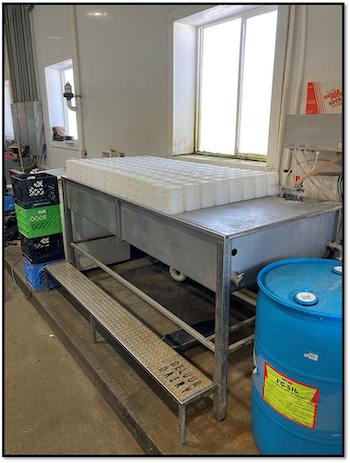During the April Hoard’s Dairyman webinar, Eggink explained that he located a hydrant and drain right by the footbaths when he built a transition cow barn in late 2017. That way, it is easy to fill and empty the footbaths.
“The easier you make something, the more you can expect that it will get done,” he advised.
A similar thought process carried into the maternity area of that barn. Cows calve in large, straw bedded pens. After a calving, the cow is guided with a swing gate into an individual stall and the colostrum is harvested using a bucket milker.

Eggink said their protocol is to wash the bucket, milking unit, and colostrum feeding equipment following every calving. Hot water and cleaner are available right there so that washing can be done without delay. Eggink reiterated that the easier it is to get the job done, the more likely it is to happen.
As for calves, they used to feed with pails but transitioned to utilizing all bottles. Eggink acknowledged that the bottles had be washed appropriately or it would lead to health problems in the calves. Yet, expecting people to wash the number of bottles they need by hand was not feasible.

For that reason, they installed a clean in place washing system for their bottles and the tank where milk replacer is mixed. “The bottle washer is critical,” Eggink said. “That really helped us greatly.”
Somewhat simple features such as these aid in protocol compliance. They can also help with job satisfaction. Eggink said that many people who work on farms want to be around cattle, but they also want to feel like they are working for people who have their back. “Put yourself in their shoes,” he said. “If you are hard to be around, employee retention will reflect that.”
To learn more, view the April Hoard’s Dairyman webinar, “The factors that help Deluur Dairy excel at transition cow care.”








